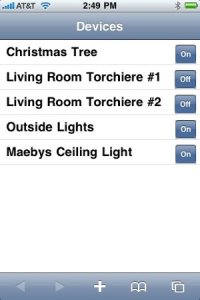
I recently migrated the machine on the right from Windows 2003 Server to Windows 2008 Server R2, 64-bit Edition. Since Synergy+ actually had a 64-bit build, I figured I'd give it a shot. My left machine already runs Windows 2008, 64-Bit Edition and Synergy+ works just fine. Unfortunately, it did not on my new build. For those who know, 2008 R2 is not just the latest release of 2008. It's essentially a whole new OS, akin to Windows 7. We have run into a couple of packages that simply won't work with the R2 release because of this, and I thought Synergy+ was one of them.
On launching the configurator, I'd get an error "The application has failed to start because its side-by-side configuration is incorrect". A quick Google of this error lead to some good information on what causes it, and how to fix it. The Wikipedia article on SxS gives a good overview of how Side by Side works. The issue that generates the error message I was looking to resolve then is due to the manifest for the Synergy + executable being wrong or pointing to the wrong location. So, now all I had to do was find out what it was pointing to and I should be able to resolve it.
The OS provides a tool called sxstrace.exe for diagnosing these kinds of issues. First, we run it in trace mode and have it capture SxS information:
sxstrace trace -logfile:trace.log
Then, launch the offending executable, in this case Synergs.exe. This produces a binary log file that we have to translate into a text file so we can read it.
sxstrace parse -logfile:trace.log -outfile:trace.txt
The highlighted line below shows what we're missing. It's the VC 9 runtime redistributable.
=================
Begin Activation Context Generation.
Input Parameter:
Flags = 0
ProcessorArchitecture = AMD64
CultureFallBacks = en-US;en
ManifestPath = C:\Program Files (x86)\Synergy+\bin\launcher.exe
AssemblyDirectory = C:\Program Files (x86)\Synergy+\bin\
Application Config File =
-----------------
INFO: Parsing Manifest File C:\Program Files (x86)\Synergy+\bin\launcher.exe.
INFO: Manifest Definition Identity is (null).
INFO: Reference: Microsoft.VC90.CRT,processorArchitecture="amd64",publicKeyToken="1fc8b3b9a1e18e3b",type="win32",version="9.0.21022.8"
INFO: Resolving reference Microsoft.VC90.CRT,processorArchitecture="amd64",publicKeyToken="1fc8b3b9a1e18e3b",type="win32",version="9.0.21022.8".
INFO: Resolving reference for ProcessorArchitecture amd64.
INFO: Resolving reference for culture Neutral.
INFO: Applying Binding Policy.
INFO: No publisher policy found.
INFO: No binding policy redirect found.
INFO: Begin assembly probing.
INFO: Did not find the assembly in WinSxS.
INFO: Attempt to probe manifest at C:\Windows\assembly\GAC_64\Microsoft.VC90.CRT\9.0.21022.8__1fc8b3b9a1e18e3b\Microsoft.VC90.CRT.DLL.
INFO: Attempt to probe manifest at C:\Program Files (x86)\Synergy+\bin\Microsoft.VC90.CRT.DLL.
INFO: Attempt to probe manifest at C:\Program Files (x86)\Synergy+\bin\Microsoft.VC90.CRT.MANIFEST.
INFO: Attempt to probe manifest at C:\Program Files (x86)\Synergy+\bin\Microsoft.VC90.CRT\Microsoft.VC90.CRT.DLL.
INFO: Attempt to probe manifest at C:\Program Files (x86)\Synergy+\bin\Microsoft.VC90.CRT\Microsoft.VC90.CRT.MANIFEST.
INFO: Did not find manifest for culture Neutral.
INFO: End assembly probing.
ERROR: Cannot resolve reference Microsoft.VC90.CRT,processorArchitecture="amd64",publicKeyToken="1fc8b3b9a1e18e3b",type="win32",version="9.0.21022.8".
ERROR: Activation Context generation failed.
End Activation Context Generation.
At this point, all I had left to do was to simply head over to Microsoft's site and download the SP1 version of the 64-bit redistributable and Synergy+ launched right up. A quick solution to a simple problem.






